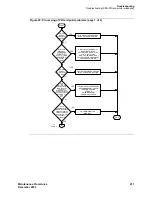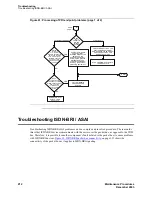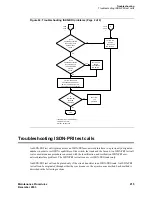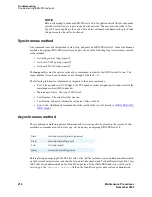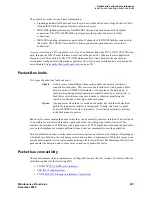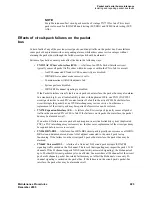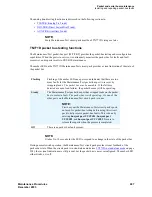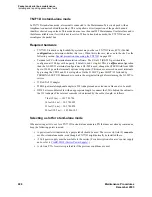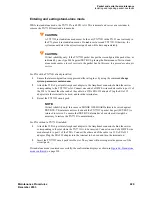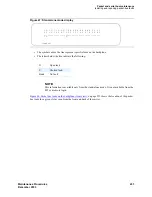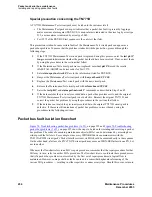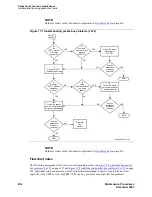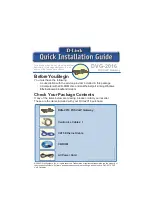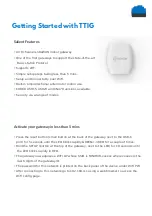
Packet and serial bus maintenance
Isolating and repairing packet-bus faults
Maintenance Procedures
225
December 2003
System response varies according by type of bus failure and whether or not the failure occurs in a:
•
PN controlled by an IPSI-connected PN
In such a PN, a catastrophic TDM bus failure (one that affects both TDM buses) disables all
traffic in the PN. A catastrophic packet-bus fault affects only packet traffic, so that TDM traffic is
unaffected, while all ISDN-BRI, ASAI, and ISDN-PRI signaling traffic is disrupted.
The significance of this distinction depends on the customer’s applications. A customer whose
primary application requires ASAI would consider the switch to be out of service, while a
customer with a:
— Large number of digital/analog/hybrid sets
— Small number of ISDN-BRI sets
would probably not consider the packet-bus fault a catastrophic problem. The only way a PN’s
packet-bus fault can affect TDM traffic is by impacting the system’s response time in a large
switch while running ISDN-BRI endpoint maintenance. This should rarely happen because the
Packet Bus maintenance software can prevent this for most faults (see
•
IPSI-connected PN
If a packet-bus fault occurs in an IPSI-connected PN, the impact can be more wide-spread. Since
an IPSI-connected PN’s packet bus can carry the signaling and control links for other PNs, a
packet-bus failure in this PN effectively:
— Disrupts the IPSI-connected PN’s packet-bus traffic
— Removes every subordinate PN within its scope from service, including both TDM and
packet buses.
CAUTION:
Packet-bus fault isolation and correction often involves circuit-pack removal, which is
destructive to service. Minimize time devoted to destructive procedures by using non-
destructive ones whenever possible.
Packet Bus maintenance software
contains information about packet bus error conditions, tests, and alarms. Since a
PN’s packet-bus fault can cause every BRI/ASAI endpoint and its associated port and circuit pack to
report faults, be careful to prevent a flood of error messages overloading the system and interfering with
traffic on the TDM bus. When such a failure occurs, circuit-pack maintenance is affected in the following
manner:
•
In-line errors for the following MOs that indicate possible packet-bus faults are logged but not
acted upon: BRI-BD, PGATE-BD, PDATA-BD, UDS1-BD.
•
In-line errors for the following MOs that indicate possible packet-bus faults are neither logged
nor acted upon: BRI-PORT, ABRI-PORT, PGATE-PT, PDATA-PT, ISDN-LNK.
•
All in-line errors for the following MOs are neither logged nor acted upon: BRI-SET, BRI-DAT,
ASAI-ADJ.
•
Circuit pack and port in-line errors that are not related to the packet bus, or that indicate a circuit
pack failure, are acted upon in the normal fashion.
•
Periodic and scheduled background maintenance is not affected.
•
Foreground maintenance (for example, commands executed from the terminal) is not affected.
Summary of Contents for CMC1
Page 1: ...Maintenance Procedures 555 245 103 Issue 1 1 December 2003 ...
Page 14: ...Contents 14 Maintenance Procedures December 2003 ...
Page 416: ...Additional maintenance procedures IP Telephones 416 Maintenance Procedures December 2003 ...
Page 426: ...Index X 426 Maintenance Procedures December 2003 ...

